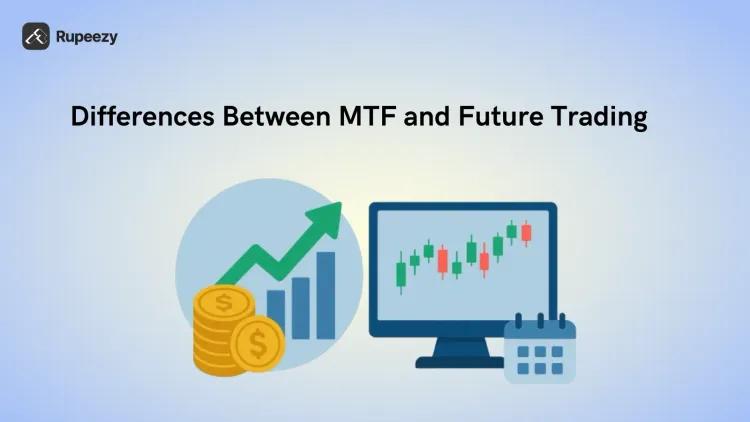What Is Implied Volatility in Options Trading?


00:00 / 00:00
Most of the traders think that trading is all about evaluating the price movements. Well, to a certain extent, they might be correct as well, but there is more to it. You need to track the performance, analyse the market, ane even plan strategies.
But when you are working with options, focusing on options trading strategies becomes very important. At the same time, understanding the market expectations is crucial too. This is where you need to understand the concept of implied volatility or IV.
So, what is implied volatility? How does it impact your work, and how can you actually calculate it effectively? Well, let us explore all the details you need in the guide here.
What Is Implied Volatility?
Implied volatility (IV) is a metric that reflects the market’s expectations. It guides you about how much the price of an underlying asset (like a stock or index) might move in the future. While this does not share with you the direction of the movement, it shares with you the magnitude. So, this can be either a positive or a negative movement.
Some of the key features of the implied volatility that you must know are:
Helps you know about the market expectations.
Guides you on the magnitude and not the direction.
Higher IV can increase the option premium.
A higher IV is also a sign of fear or uncertainty.
News and other factors play an important role.
Reduces the risk factors to a certain level.
Deciding on buying and selling becomes simpler.
Types of Implied Volatility
Implied volatility generally falls into two categories. These are the high volatility and low volatility. So, here are the details of the same that you must know:
1. High Implied Volatility
It is high price swing expectations. This is usually due to some major announcement. It can be linked to situations like earnings results, or economic events. Traders are uncertain about the outcome, so option prices rise because of the higher perceived risk.
Effect: Option premiums become expensive.
Market Mood: Fear, uncertainty, or anticipation of big news.
Best For: Option sellers who can benefit from time decay if prices remain stable.
2. Low Implied Volatility
It is the condition where price movements are expected to be moderate or low. There are no major changes expected that can impact your profits. This happens when there is no major news or events expected soon.
Effect: Option premiums become cheaper.
Market Mood: Confidence and stability among traders.
Best For: Option buyers who can profit if volatility increases unexpectedly.
Implied Volatility Formula
There is no single fixed mathematical formula to calculate implied volatility (IV) directly. But it is derived by combining two options pricing models, which are the Black-Scholes Model or the Binomial Model. Using these, you can get an estimate of the potential IV.
The general process involves the following relationship:
Option Price = f (Stock Price, Strike Price, Time to Expiry, Interest Rate, Volatility)
Here, all other factors are known except volatility. The implied volatility is thus the estimation that helps to know whether the actual price and the estimated price fall in line.
The key inputs that are used are:
Current stock price
Strike price of the option
Time to expiration
Risk-free interest rate
Market price of the option
Traders use online implied volatility calculators or trading platforms to determine this value instead of calculating it manually.
Example of Implied Volatility
Here is a simple example to understand implied volatility (IV).
Let us assume that Stock A is trading at Rs. 1,000. Now, there is a one-month call option with a strike price of Rs. 1,050. This is priced at Rs. 25 in the market.
When all known variables, such as the stock price, strike price, time to expiry, and interest rate, are entered into the Black-Scholes model, the only unknown is volatility. The value that makes the model’s theoretical price equal to the market price of Rs. 25 is the implied volatility.
If important company news is expected soon, traders may anticipate strong price movements. This will boost the demand and the volatility may rise 20% to 35%. This rise pushes option premiums higher even if the stock price does not change.
This example shows how implied volatility in options reflects market expectations and potential price movement, not the direction of the move.
How to Use Implied Volatility
Knowing what implied volatility is just the start. When you are trading in futures and options, you need to know how to use them as well. So, here are some of the ways that you must follow:
1. Evaluate Option Pricing
You must start by evaluating the implied volatility. It helps you know whether an option is overpriced or underpriced. High IV means the market expects big movements, so option premiums are higher. Low IV means less movement and cheaper options.
2. Plan Entry and Exit
Buy options when IV is low and sell when it increases. This approach helps you take advantage of changing market volatility. This also helps in improving your profit potential.
3. Assess Market Sentiment
The implied volatility also shares the fears and uncertainty. If it is rising, then there is a high level of uncertainty. But if it is falling, then this is a good time for you to plan.
4. Compare Different Assets
You can compare IV across multiple stocks or indices. This will help you identify the opportunities where you can trade better and earn more.
5. Choose the Right Strategy
Use high IV periods for strategies like straddles or strangles to limit risk and low IV periods for directional trades to maximize movement-based gains.
Factors Affecting Implied Volatility
When it comes to implied volatility, there are certain things that you need to consider. These are the factors that impact the implied volatility.
1. Market Demand and Supply
When more traders buy options, demand rises. This pushes the overall option prices and IV. Conversely, when selling dominates, IV drops as prices decline.
2. Major News and Events
Any announcement or news that links to the industry or government can impact the volatility. Keeping an eye on these can help you make the right call.
3. Market Sentiment
Investor emotions drive volatility. When there is fear or panic, the IV would be high. This will reduce confidence and can reduce profitability.
4. Time to Expiration
Options closer to expiry have less time for price movement. This reduces the implied volatility and helps you close better deals. So, if the options have longer dates, then the potential for changes is greater.
5. Underlying Asset Volatility
For every trade, there is an underlying asset, like shares or stocks. So, if there is a rise in the volatility of these stocks, there will be a rise in the option volatility as well.
6. Economic Indicators
Macroeconomic data, such as inflation rates or interest rates, play an important role in the volatility. Also, there are factors like GDP and other variables that can help you know the IV.
Pros and Cons of Implied Volatility
Knowing how to use the implied volatility is one thing. But you must also know the pros and cons of using the same. So, here are the key pros and cons that you must keep in mind:
Pros of Implied Volatility
Help you see if the option is underpriced or overpriced.
Guides you on the right trading strategy.
Helps you understand the market better.
Highlights market sentiments and investor confidence.
Supports in managing risk better.
It can be used with multiple types of trading in the stock market.
Helps predict potential price swings and volatility shifts.
Cons of Implied Volatility
Do not share the direction of price movement.
Sometimes signals can be false, especially for short-term.
Not good for beginners.
Interpreting changes can be hard.
It can impact on the profit margin as well.
Conclusion
Understanding the implied volatility is one thing. But knowing how to use it effectively comes only with proper practice and implementation. This will help you to understand how you use it and when. Also, with the proper analysis and interpretation, you can ensure that you make the right decision. Remember, IV does not predict direction but reflects potential market movement.
So, if you are ready to trade and invest better, start today. Register with Rupeezy and start your trading journey effectively.
FAQs
What is implied volatility in simple terms?
It measures how much the market expects the price of a stock or asset to move in the future.
How does implied volatility affect option prices?
Higher IV makes options more expensive, while lower IV results in cheaper option premiums.
What is an implied volatility chart used for?
It helps traders visualize volatility trends. This way, you can find the entry and exit points effectively.
Can implied volatility predict market direction?
No, it only shows the extent of expected price movement, not whether prices will rise or fall.
How can traders benefit from tracking implied volatility?
By studying IV levels, you can select better trading strategies and ensure that you end with better investing calls. This will help you to manage risks and improve your profits.
The content on this blog is for educational purposes only and should not be considered investment advice. While we strive for accuracy, some information may contain errors or delays in updates.
Mentions of stocks or investment products are solely for informational purposes and do not constitute recommendations. Investors should conduct their own research before making any decisions.
Investing in financial markets are subject to market risks, and past performance does not guarantee future results. It is advisable to consult a qualified financial professional, review official documents, and verify information independently before making investment decisions.

All Category










